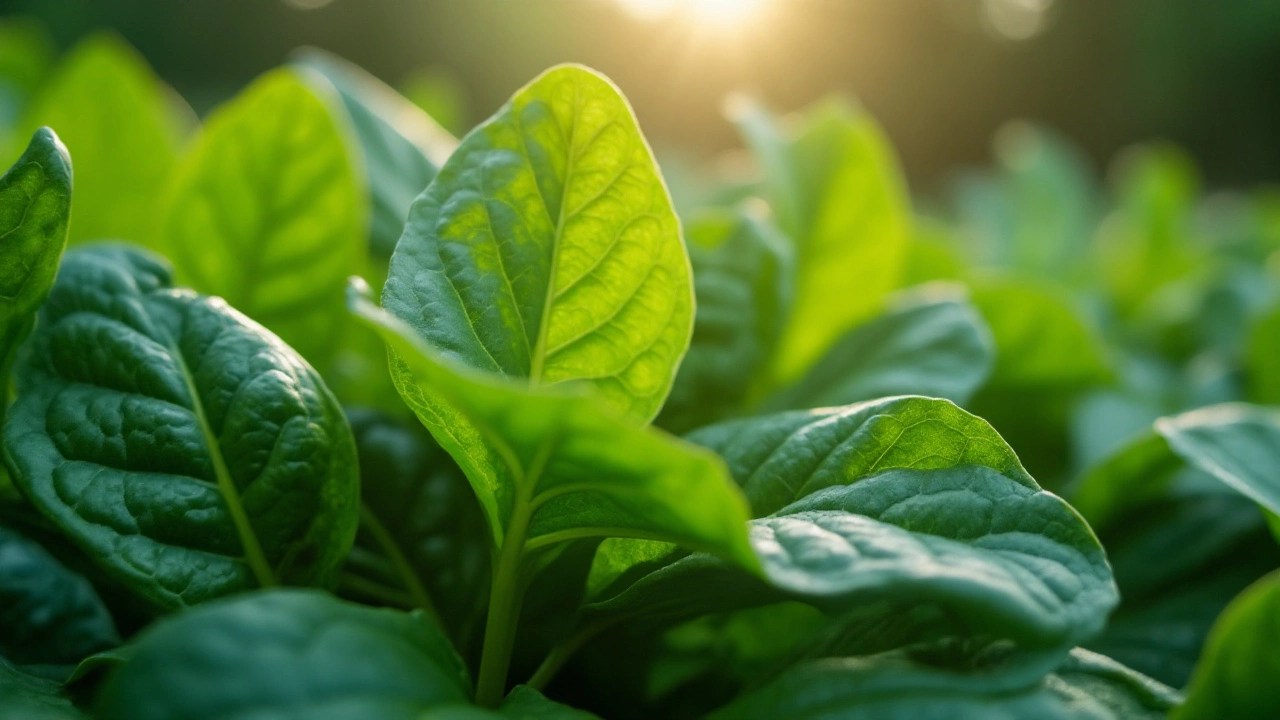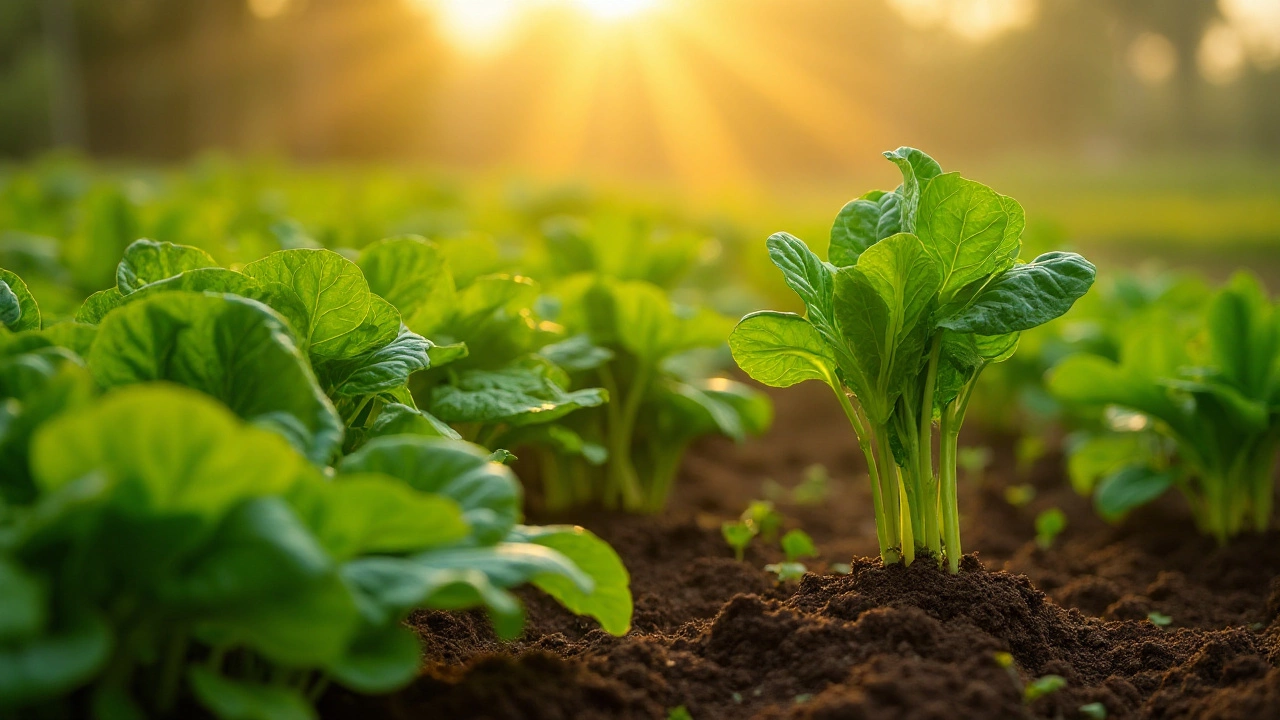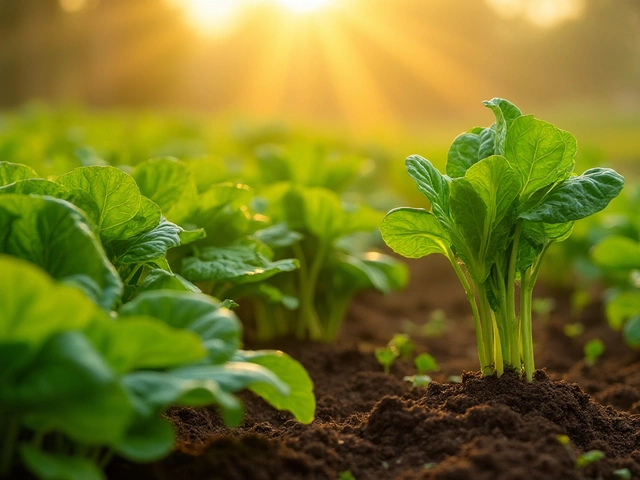When we delve into the vibrant world of vegetable gardening, the quest for the healthiest vegetable can feel much like searching for a hidden gem. But what makes a vegetable earn this prestigious title? It’s a blend of nutrition, versatility, and the ability to thrive in various climates, particularly in the diverse lands of India.
Password locked in its verdant leaves and roots is a treasure trove of health benefits. Have you ever wondered which vegetable can claim this crown? In this article, we'll uncover this mystery, making you wonder why this vegetable hasn't been the centerpiece of your garden yet.
We'll guide you through its journey from an often overlooked crop to the star of the show. With practical tips on how to successfully introduce and cultivate this wonder in your own Indian garden, you'll be equipped not just with knowledge but also with enthusiasm to take that gardening adventure to new, bountiful heights.
- Defining Healthiest Criteria
- The Mighty Vegetable
- Tips for Growing in India
- Nutritional Benefits to Cherish
Defining Healthiest Criteria
In the quest to determine the healthiest vegetable for your garden, defining what 'healthiest' means is the first step. While nutrition is a foundational aspect, several other criteria must be considered to truly crown a vegetable as the pinnacle of health. Let's start with nutritional density, which plays a crucial role. A vegetable packed with vitamins, minerals, antioxidants, and essential amino acids holds a higher rank in the health hierarchy. These nutrients are invaluable for overall health, contributing to everything from boosting the immune system to reducing inflammation. However, nutrition isn't the only kingmaker here.
Another vital consideration is the climate adaptability of the vegetable, especially when specific to a country like India, with its distinct and varied climatic zones. A vegetable that can thrive in different Indian climates and resist local pests and diseases offers practical advantages. It ensures not just high yields but also sustainability and ease of cultivation. The ease of growing the vegetable, which includes factors like seed availability, soil adaptability, and water requirements, also weighs in significantly. A vegetable that flourishes without needing extensive resources or specialty growing techniques will naturally be more accessible to a wider swath of gardeners. By simplifying the process, we ensure more individuals can engage in growing their own health-enriching crops.
Longevity and storability, alongside ease of harvesting, are additional factors. A vegetable that stores well and maintains its nutritional profile over time provides continuous health benefits and reduces waste. A quote from the Royal Horticultural Society states, "Choosing the right variety not only bolsters the health economy but also the environment, allowing for efficient use of natural resources." Such all-round sustainability is as important in defining 'healthiest' as the initial nutritional kick. Therefore, the true healthiest vegetable ticks multiple boxes: it's nutrient-rich, climate-resilient, easy to cultivate, and boasts storability, making it a comprehensive choice for any Indian garden.
Imagine stepping into your garden and having a vegetable that meets all these criteria, providing not just valuable nutrients but also a sense of satisfaction and accomplishment from cultivating something truly beneficial. That's the magic that occurs when you consider all aspects of health, moving beyond just what appears on the nutritional label. Take care to understand these detailed traits when planning what to grow next time, and you'll undoubtedly enhance both your garden's beauty and your table's bounty.

The Mighty Vegetable
In the race for health supremacy among vegetables, the title of the mightiest often goes to the humble yet powerful Spinach. This leafy green, packed densely with nutrients, has solidified its status as a health superstar worldwide. In Indian gardens, where it's perfectly suited to the climate, spinach stands out not just for its ease of growth but for the remarkable benefits it brings to the table. The Nutritional geek speaks highly of it, often termed as the ‘Popeye’s power’ because of its dense nutrition profile. It’s no small wonder that in the lush tapestry of India’s agricultural landscape, spinach rivals any other produce when it comes to being regarded as a superfood.
Spinach’s origins can be traced to ancient Persia, where it was first cultivated and later spread throughout Asia. The rest of the world soon followed suit as its myriad of health benefits gained fervent recognition. What exactly makes spinach so formidable, you might ask? For starters, it's packed with compounds such as antioxidants, vitamins A, C, K1, and essential minerals like iron and calcium. Here’s a fun fact: consuming a 100-gram serving of fresh spinach supplies about four times your daily required vitamin K intake. These nutrients not only support growth and repair in the body but also play a crucial role in maintaining eye health, reducing oxidative stress, preventing cancer, and regulating blood pressure.
The World Health Organization recognizes green leafy vegetables, particularly spinach, as a powerful ingredient for dietary diversification and enhancement of food security globally.
Another thrilling aspect is spinach's versatility. It serves as an excellent ingredient in a multitude of dishes, lending itself to a tasty salad, a superb soup, or a robust curry, spinning flavors into the Indian palate seamlessly. Adding spinach to your diet is not just about leafy greens; it represents a step towards embracing a healthier lifestyle. But that’s not all—spinach is incredibly easy to grow and highly adaptive to diverse growing conditions.
Benefits of Growing Spinach
In India, the temperatures and sunny days blend perfectly with spinach's growing conditions, making it an ideal vegetable gardening choice. Whether you nurture it in a quaint balcony pot or across sprawling garden beds, spinach rewards its growers with abundant yields. This functional vegetable not only nourishes the family but also contributes towards sustainable gardening practices. With its short growing period, typically ranging from 6-10 weeks from seed to harvest, it caters to quick turnover for regular consumption.
Gardening enthusiasts often experiment with myriad spinach varieties to find their perfect match. From the robust flavors of the renowned 'Malabar Spinach' to the delicate leaves of the 'Smooth-Leafed' variety, each type holds a unique place in the gardeners’ playbook. Rich, loamy soil and ample sunlight encompass the secret ingredients to spinach's thriving growth. An often-repeated gardener’s tip: keep the soil moist but not waterlogged for a robust yield. Cultivating spinach embodies the essence of why small victories in gardening translate to immense satisfaction and health dividends.

Tips for Growing in India
Embarking on the journey to grow the healthiest vegetable in your Indian garden requires a blend of patience, attentiveness, and understanding of your local environment. India’s diverse climate plays a significant role in shaping how well your chosen vegetable will thrive. Depending on whether you are in the cooler northern states or the humid southern regions, you need to align your gardening practices accordingly. Start by selecting a spot in your garden that receives sufficient sunlight, as most vegetables in this category demand ample light to flourish. Implementing raised beds can be an effective method to improve drainage, particularly in the monsoon-prone areas. It might interest you to know that well-drained soil helps prevent the onset of diseases and retains essentials like nutrients comfortably.
Soil composition is another crucial element for their growth. Many Indian gardeners opt for enriching their soil with organic compost or decomposed cow manure, which serves as a powerhouse of nutrients. This practice not only supplements the soil but also enhances its microbial activity—a vital factor for plant health. Watering practices vary significantly across regions, but a general rule of thumb is to keep the soil consistently moist without causing waterlogging. It is also smart to take protective measures during extreme weather conditions, like employing shade nets during peak summer months to prevent sun scalding.
Seeds play a pivotal role too; selecting a resilient variety known for its adaptability and yield can be transformative. It's advisable to source seeds from reputable suppliers or local agricultural stores familiar with regional variances. Starting seeds indoors before moving them outside can increase your chances of success, as it gives the seedlings a head start in a controlled environment. As a small tip, practicing companion planting will not only maximize your space but can provide natural pest control benefits. Growing aromatic herbs alongside can keep unwanted bugs at bay.
Continuously monitor plant health through its lifecycle. Understanding plant signals can help you detect nutrient deficiencies or pest invasions early. One useful approach is to incorporate green mulching to enhance soil fertility and conserve moisture, particularly important in arid zones. Engaging with local gardening communities can offer invaluable insights and suggestions tailored to your specific needs. As Mahatma Gandhi once expressed,
"To forget how to dig the earth and to tend the soil is to forget ourselves."Keeping such advice in mind, nurture your gardening journey with a sense of commitment and curiosity.
Helpful Data for Reference
| Climate Zone | Best Planting Months |
|---|---|
| Tropical | October to February |
| Subtropical | March to June |
| Temperate | May to September |
Utilizing this data can ensure you place your vegetable seeds into the ground at the optimal time, aligning with your local climate conditions. This planning phase plays an incredibly vital role in determining the success of your gardening endeavor. With these tips in hand, your path to growing the most nutritious vegetable in India becomes not just a feasibility but an exciting possibility.

Nutritional Benefits to Cherish
When we speak of the nutrient powerhouses nestled in our gardens, it's impossible to overlook the myriad benefits offered by certain vegetables. Let's dive into how the chosen healthiest vegetable for your Indian garden truly is a player in the world of nutrition. Many vegetables are revered for specific benefits, but there is one that stands above for its unique combination of low calorie and high nutrient density, making it a favorite among health enthusiasts and nutritionists alike.
Rich in vitamins A, C, and K—all essential for maintaining various bodily functions—this vegetable doesn't merely top the charts; it transforms the very notion of healthy eating. Vitamin A plays a crucial role in maintaining good vision and ensuring the proper functioning of the immune system, while vitamin C is a well-known antioxidant that helps protect cells from damage caused by free radicals. Don't forget vitamin K, important for its role in blood clotting and bone health. Now consider its abundance of minerals such as potassium, iron, and calcium, each contributing towards maintaining heart health, fighting anemia, and supporting skeletal structure, respectively.
It's no exaggeration to say that this vegetable is like a Swiss army knife of nutrition, providing a multifaceted approach to health. But the benefits don't stop at vitamins and minerals. It’s also packed with fibers, vital for digestive health, and famed for boosting the digestive system by promoting regular bowel movements, helping control blood sugar levels, and lowering cholesterol. Moreover, including this one in your everyday diet can lead to both enhanced metabolic rates and weight management. In terms of nutrient-to-calorie ratio, it stands peerless, lending volumes of goodness for very few calories—a delightful riddle for body and waistline alike.
"For centuries, this vegetable's unique properties have been appropriated by countless cultures," notes Dr. Anil Bhatia, a renowned nutritionist from New Delhi. "Its incorporation into everyday diets has demonstrably shown improvements in health and wellbeing."
So, as you scout your local markets or consider planting options for your garden, keep in mind that sometimes the real jewel lies not in the exotic or endangered, but in the common, vital choices right under your nose that can yield profound benefits. Words like 'superfood' may sell magazines and spike internet trends, but the unassuming healthiest vegetable reigns through its mild presence, robust flavor, and superior health values that genuinely respond to our body's needs. Now, that’s something to write home about—or in this case, your very corner of the garden.




